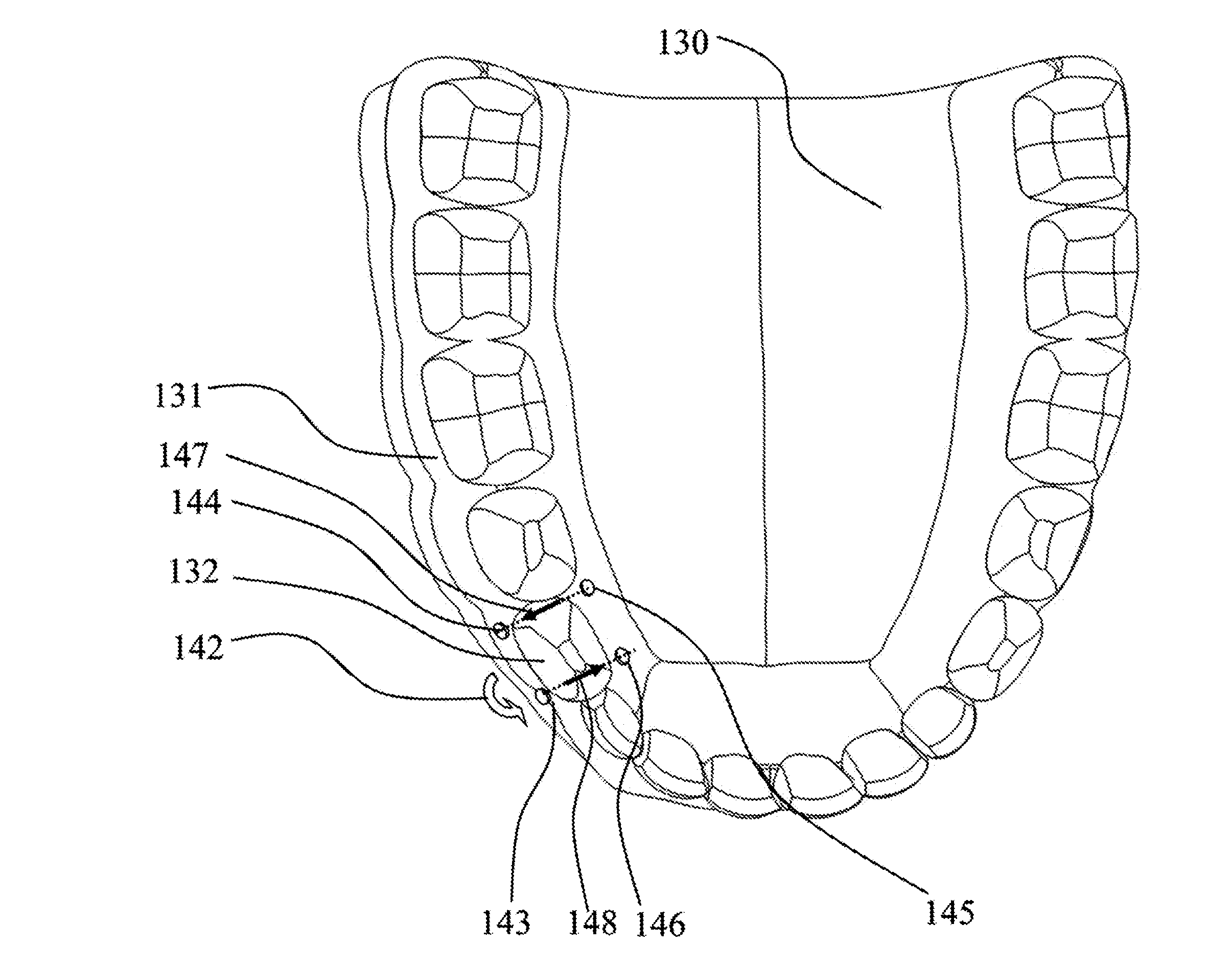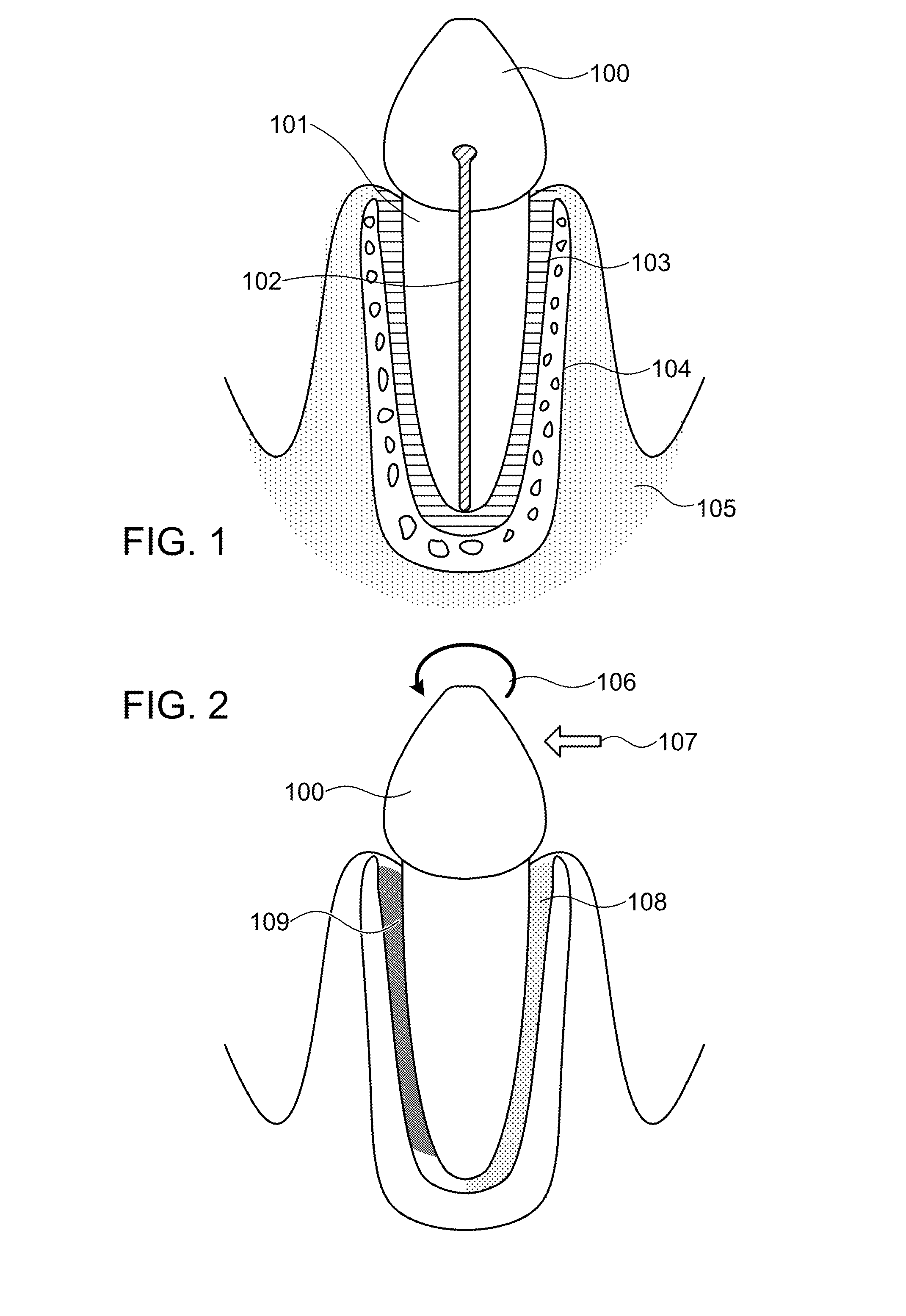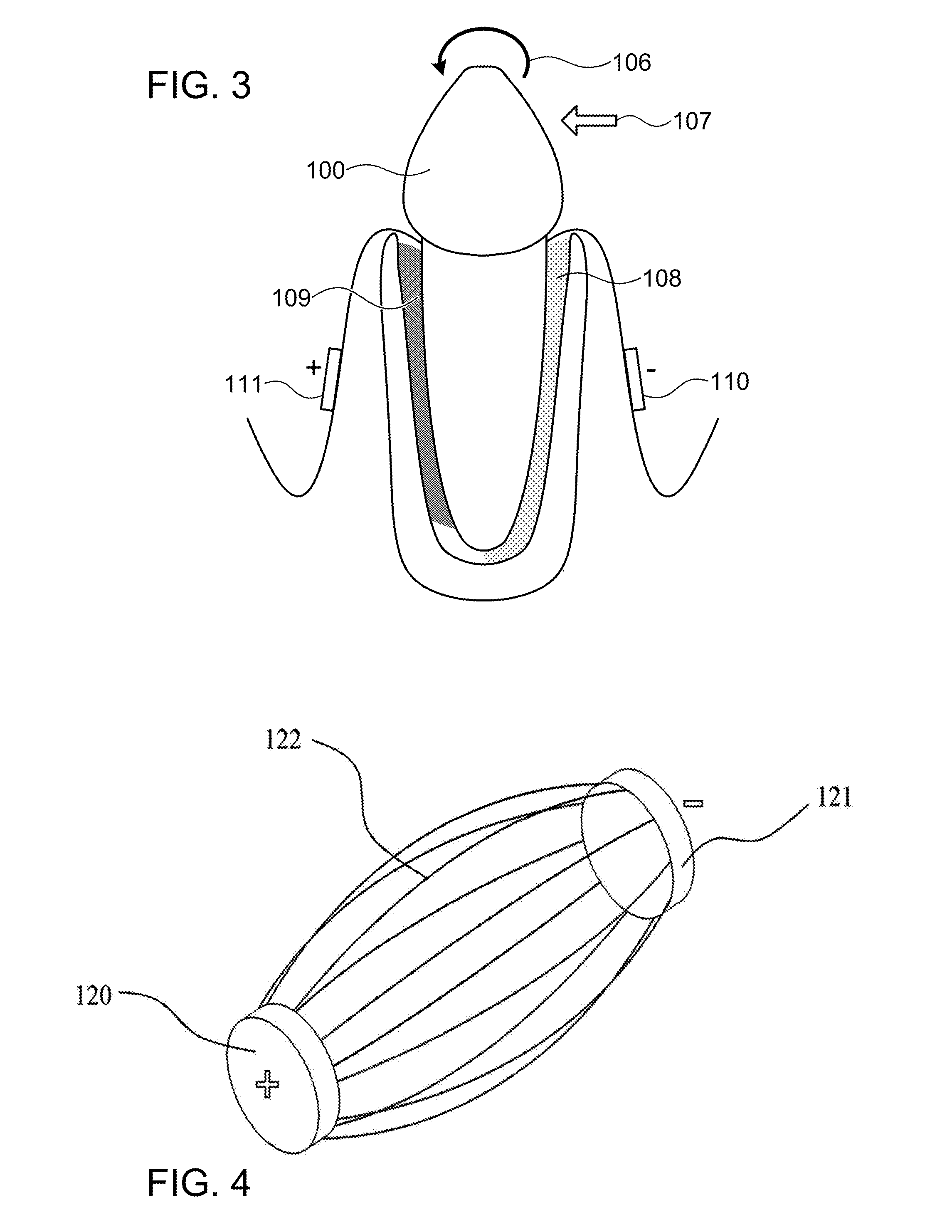Method to enhance orthodontic tooth movement
a technology of orthodontic teeth and movement, applied in the field of orthodontic tooth movement enhancement, can solve the problems of long treatment time, high cost of classic orthodontic tooth movement treatment that requires continuous application of force to create the necessary tooth movement, and inability to achieve the effect of enhancing the orthodontic treatment effect, reducing the amount of mechanical pressure needed, and evoking additive or synergistic responses
- Summary
- Abstract
- Description
- Claims
- Application Information
AI Technical Summary
Benefits of technology
Problems solved by technology
Method used
Image
Examples
Embodiment Construction
[0031]Referring to FIG. 1., there is shown a schematic illustration of a longitudinal section of a human mandibular canine. The tooth is comprised of a crown 100 and a root 101. Centrally located within the body of the tooth is its root canal 102. The crown is visible in the mouth, while the root is not, because it is encased in soft connective tissue fibrous mesh known as the periodontal ligament (PDL) 103, and the PDL is surrounded by alveolar bone 104. The alveolar bone faces the PDL on one side, and is covered by the gingival and mucosal tissue (gum) 105 on the other. All these tissues, dental and paradental, contain living cells, which are responsible for the remodeling of all these tissues in response to orthodontic forces. This remodeling process is the mechanism that facilitates orthodontic tooth movement.
[0032]Referring to FIG. 2, there is shown a schematic illustration of some physical changes that result from application of an orthodontic force to a tooth 100. The mechani...
PUM
 Login to View More
Login to View More Abstract
Description
Claims
Application Information
 Login to View More
Login to View More - R&D
- Intellectual Property
- Life Sciences
- Materials
- Tech Scout
- Unparalleled Data Quality
- Higher Quality Content
- 60% Fewer Hallucinations
Browse by: Latest US Patents, China's latest patents, Technical Efficacy Thesaurus, Application Domain, Technology Topic, Popular Technical Reports.
© 2025 PatSnap. All rights reserved.Legal|Privacy policy|Modern Slavery Act Transparency Statement|Sitemap|About US| Contact US: help@patsnap.com



